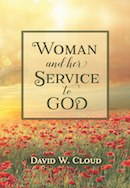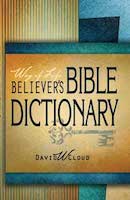866-295-4143, fbns@wayoflife.org
It has been said that “a picture is worth a thousand words,” and I have no doubt that more people have been influenced to believe in evolution by artwork than by words. From its inception, Darwinian evolution has been popularized by art.
Lying art.
PILTDOWN MAN
Piltdown Man was held forth as a missing link in human evolution for 40 years, but it turned out to be a complete hoax.
In 1912, amateur naturalist Charles Dawson told the Geological Society of London that over the previous four years fragments of a skull, half of a lower jawbone, and a tooth had been found at the Piltdown gravel pit in Sussex. Dawson had been accompanied on some of his excavations by Arthur Smith Woodward, keeper of the geological department at the British Natural History Museum and the world’s leading expert on fossil fish, and by Teilhard de Chardin, Jesuit priest and New Age mystic. It was Teilhard who found another tooth at the Piltdown site in August 1913.
Eventually the esteemed scientific team examining the bones included Arthur Keith, professor of anatomy at the Royal College of Surgeons, and Grafton Elliot Smith, a renowned brain specialist. (In 1922, Smith collaborated with an artist to produce the likeness of “Nebraska Man” in the Illustrated London News. This missing link turned out to be fossilized pig.)
Piltdown man was given the scientific name of Eoanthropus dawsoni (“Dawson’s dawn-man”) in honor of its discoverer.
The hoax was not even an accomplished one and should have been obvious from the beginning even to amateurs. “The file marks on the orangutan teeth of the lower jaw were clearly visible. The molars were misaligned and filed at two different angles. The canine tooth had been filed down so far that the pulp cavity had been exposed and then plugged” (Lubenow, p. 58). Further, the teeth were not even stained; they were painted with brown paint (Walsh, p. 69, 70); they were not even uniformly colored; one was much darker than the others (Walsh, p. 45).
Piltdown’s discoverers even found an elephant bone carved in the appearance of a small cricket bat. What more evidence would you need to prove that the British evolved from apes, when their ape-men ancestors obviously loved cricket! It appears that whoever perpetrated the hoax was trying to end the thing with this silly concoction, but the evolutionists were so gullible, they so terribly wanted to see an ape-man fossil, that they fell for the thing hook, line, and sinker--filed teeth, misaligned molars, plugged cavities, cricket bat, and all.
Upon discovery of the “fossils,” The New York Times ran a headline, “Darwin Theory Proved True.” The subtitle screamed, “English Scientists say the skull found in Sussex establishes human descent from apes.”
Drawings, paintings, and statues of Piltdown began to proliferate. The one by Louis Rutot, titled Man of Sussex,” depicted Piltdown as an ape-man (a half-ape, half-human head on a hairy human body) making a crude tool.
That was at the dawn of the age of unbelief, and since then all of the major secular publications of the world have set themselves to tear down the authority of Almighty God and to discredit His holy Word. Every new “scientific discovery,” regardless of how questionable, has been announced to the world as “proof” that the Bible is not true and that man is an evolved animal.
Though there were skeptics, in general the Piltdown Man was accepted as a genuine missing link and adopted into textbooks, described in encyclopedias, represented at museums, and discussed in hundreds of articles and scientific papers.
“Evolutionists now like to boast that not everyone accepted Piltdown. Technically they are correct. There were a few, such as Weidenreich and Hrdlicka, who did not accept Piltdown. But the vast majority of paleoanthropologists worldwide did accept Piltdown as legitimate, especially after the confirming discoveries at Piltdown II” (Lubenow, Bones of Contention, p. 56).
“Young scientists and old alike wasted untold thousands of hours on the Piltdown phenomenon. The laborious study, and the writing and publishing of the several hundred research reports and papers worldwide, the sheer, enormous amount of space in books and articles given to sober discussion of its every smallest aspect, make a picture sad to contemplate” (John Walsh, Unravelling Piltdown, p. xvi).
Piltdown was used to silence Bible believers the world over.
“Needless to say, objections to man’s ape ancestry made in the pulpit were effectively silenced. A whole generation grew up with Piltdown man in their textbooks and home encyclopedias; who in their right mind would question the veracity of the Encyclopedia Britannica?” (Ian Taylor, In the Minds of Men, p. 224).
At the Scopes Trial in 1925, lawyer Clarence Darrow used Piltdown as evidence of evolution through testimony introduced by his “expert” witnesses. These were Professor Fay-Cooper Cole and Professor Horatio Newman (professors at the University of Chicago). Judge Raulston allowed their testimonies to be read into the court record.
Piltdown was treated enthusiastically by British paleontologists. The British Museum of Natural History, which was the keeper of the bones, was completely duped. A plaster reconstruction took a prominent place in the museum, where it stood for the next 40 years and influenced thousands of visitors to this cathedral of modern science.
Arthur Smith Woodward published a book about Piltdown entitled The Earliest Englishman (1948). Woodward even devoted a chapter to “The Everyday Life of Piltdown Man.” Waxing eloquent about this mythical creature, Woodwood said Piltdown walked in a shuffling gait, lived in caves, cooked on fires, boiled water, carried his water in leather bladders, and ate meat from animals he caught in snares and pits, supplementing his diet with roots, nuts, and seeds. Piltdown dressed in skins with “the fur turned inside, made leather thongs for various purposes, and buried his dead.” One thing you must give these evolutionists: they have incredible imaginations! No wonder that many of them have bee at the forefront of science fiction.
(Piltdown wasn’t the first hoax that Woodward fell for. In 1914 he had been duped by a schoolboy prank. Some boys scratched a crude drawing of a horse’s head and forequarters on a piece of bone and had it sent to the National History Museum for inspection. Woodward excitedly announced in the journal of the Geological Society that it was a rare example of “the pictorial art of Palaeolithic man.” After Woodward’s retirement, leading paleontologist William Sollas of Oxford University stated in his book Ancient Hunters that the bone was “a forgery perpetrated by some schoolboys.” Woodward was also involved in the “Rhodesian Man” fiasco. A skull and bones found in 1921 by zinc miners in British Northern Rhodesia was pronounced by Woodward to be another “missing link.” He and W.J. Pycraft determined that the Rhodesian man walked in ape-man fashion and initially named it Cyphanthropus or “stooping man.” Eventually, though, it was determined to be a “modern man” that walked perfectly upright and was renamed Homo rhodesiensis.)
Piltdown played a significant role in “proving” Darwinian evolution in England during the first half of the twentieth century, and its discoverers were rewarded generously. Arthur Keith, Arthur Woodward, and Grafton Elliot Smith were knighted by the Queen. Woodward, who said that Piltdown was “the most important thing that ever happened in my life,” was awarded the Royal Society’s Gold Medal, the Lyell Medal, the Linnean Medal, the Wollaston Prize, the French Academy’s Prix Cuvier, and the American Museum’s Thompson Medal. In 1915 an oil painting of Smith, Woodward, and Keith was hung in the Royal Institution to honor the fathers of the famous Piltdown.
Why did so many evolutionary scientists accept this fraud, because it “admirably satisfied the theoretical expectations of the time” (Richard Harter, “Piltdown Man,” 1996, http://home.tiac.net/~cri_a/piltdown/piltdown.html). Since the jawbone was apelike and the skull human, Piltdown was considered a missing link in the evolutionary chain. It happened to exactly fit the evolutionary conception at that time of what the “missing link” would look like--a creature that was evolving from apedom by means of his rapidly increasing brain power. “A big-brained ancestor was what evolutionists expected to find. Sir Grafton Elliott Smith had predicted that a fossil very similar to Piltdown would be found” (Marvin Lubenow, Bones of Contention, p. 58).
Like Percival Lowell who saw canals on Mars, the paleontologists who accepted Piltdown saw what they wanted to see.
In 1915, a challenge to Piltdown appeared in the form of a lengthy scientific study by anthropologist Gerrit Miller of the Smithsonian Institution. He painstakingly compared the Piltdown jaw to the jaws of more than 100 apes and concluded that the Piltdown jaw could not possibly fit the skull. Miller was treated roughly by Woodward and others at the British Museum. Zoologist William Pycraft gave a public reply to Miller that consisted “largely of personal abuse” (Walsh, p. 52). This is how naysayers are treated by evolutionists to this very day.
In 1923, anatomist Franz Weidenreich voiced his opinion that the jawbone was that of an orangutan with filed-down teeth, but these concerns were ignored for another 30 years.
In 1953, the British Museum ran a chemical fluorine test on the Piltdown fossils and discovered that they were modern. In November of that year, the London Times published evidence that Piltdown’s skull was actually a composite of a 500-year-old human skull, the lower jaw of an orangutan, and the tooth of a chimpanzee. The aging had been created by staining the bones with an iron solution and with brown paint. The teeth had been filed to fit and to show wear and patched with gum. It was also found that one of the teeth was an elephant molar and another was from a hippopotamus (Walsh, p. 75).
The bad news was delivered to Sir Arthur Keith not long before his death. His book, The Antiquity of Man, first published in 1916, had focused on Piltdown, treating it as the missing link. In his autobiography, Keith described how that he rejected the Bible and the gospel of Christ on the basis of evolution. Keith attended evangelistic meetings and was on the verge of converting to Christ, but he drew back because he believed that the Genesis account of creation had been proven to be a myth (Lubenow, p. 59). In reality, Keith gambled his eternity on evolutionary myths.
Who perpetrated the Piltdown fraud? Many books and articles have been written to express an opinion on this interesting question. Candidates include Dawson, Keith, Smith, Woodward, Teilhard, Martin Hinton, even Arthur Conan Doyle (creator of Sherlock Holmes). It appears to me that Charles Dawson is the likely candidate, though he might not have acted alone. He was the “discoverer” of most of the fossils, and he had a history of faking fossils and of plagiarism, as John Walsh documents in his book Unravelling Piltdown. Walsh says, “During the final decade of the nineteenth century, Dawson perpetrated half a dozen or more frauds, none quite as elaborate as Beauport, but all in their own way ingenious” (p. 178).
It is very possible that Teihard also had a part in the scheme.
“On 29 August 1913 Teilhard stayed overnight with Dawson and went next day with him and Woodward to the Piltdown pit. Lo! There appeared one of the two missing canine teeth. Arthur Smith Woodward reported that they excavated a deep trench in which Father Teilhard was especially energetic. When he exclaimed that he had picked up a canine tooth, the others were incredulous, telling him that they had already seen bits of ironstone that looked like teeth on the spot where he stood, but Teilhard insisted that he was not deceived. They left their digging to verify his discovery; there could be no doubt about it--Teilhard had found a canine from the previously discovered jaw” (Michael Pitman, Adam and Evolution, p. 92).
In a letter to The Times, November 25, 1978, Dr. L.B. Halstead, of Reading University, testified that “according to Martin Hinton the Piltdown man hoax was planned and executed with the Museum.” Hinton, Keeper of Zoology at the museum, died in 1961. In the 1970s a canvas trunk with his initials was found at the museum and found to contain bones that had been stained after the same fashion as the Piltdown fossils (though not using exactly the same chemical combinations). This was announced in 1996, but England’s foremost keeper of fossils has conveniently lost the important trunk.
The real fraud was committed not only by the British Museum and the larger evolutionary scientific community but also by all of the anti-God publications that rushed to announce that evidence disproving the Bible had been discovered.
“The museum’s partners in fraud include everyone within the scientific community who trumpeted these finds without challenging the evidence. So eager were they all to validate Darwin and the naturalist worldview that they closed their eyes to the obvious” (Jack Cashill, Hoodwinked: How Intellectual Hucksters Have Hijacked American Culture, p. 183).
Louis Leakey, in his book Adam’s Ancestors, testified that on each occasion that he visited the British Museum to do research on Piltdown, he was given the original fossils for just a few moments and then given casts to work on. But it turned out that the casts did not have the file marks on the teeth that were visible on the originals. The evidence of staining, painting, patching, and other modifications would also not have been evident on the casts.
- Receive these reports by email
- www.wayoflife.org
______________________
Sharing Policy: Much of our material is available for free, such as the hundreds of articles at the Way of Life web site. Other items we sell to help fund our expensive literature and foreign church planting ministries. Way of Life's content falls into two categories: sharable and non-sharable. Things that we encourage you to share include the audio sermons, O Timothy magazine, FBIS articles, and the free eVideos and free eBooks. You are welcome to make copies of these at your own expense and share them with friends and family. You may also post parts of reports and/or entire reports to websites, blogs, etc as long as you give proper credit (citation). A link to the original report is very much appreciated as the reports are frequently updated and/or expanded. Things we do not want copied and distributed are "Store" items like the Fundamental Baptist Digital Library, print editions of our books, electronic editions of the books that we sell, the videos that we sell, etc. The items have taken years to produce at enormous expense in time and money, and we use the income from sales to help fund the ministry. We trust that your Christian honesty will preserve the integrity of this policy. "For the scripture saith, Thou shalt not muzzle the ox that treadeth out the corn. And, The labourer is worthy of his reward" (1 Timothy 5:18). Questions? support@wayoflife.org
Goal:Distributed by Way of Life Literature Inc., the Fundamental Baptist Information Service is an e-mail posting for Bible-believing Christians. Established in 1974, Way of Life Literature is a fundamental Baptist preaching and publishing ministry based in Bethel Baptist Church, London, Ontario, of which Wilbert Unger is the founding Pastor. Brother Cloud lives in South Asia where he has been a church planting missionary since 1979. Our primary goal with the FBIS is to provide material to assist preachers in the edification and protection of the churches.
Offering: Offerings are welcome if you care to make one. If you have been helped and/or blessed by our material offerings can be mailed or made online with with Visa, Mastercard, Discover, or Paypal. For information see: www.wayoflife.org/about/makeanoffering.html.





